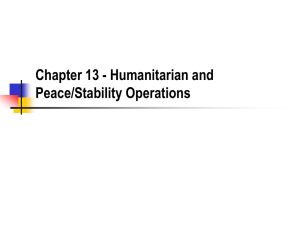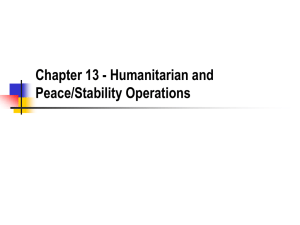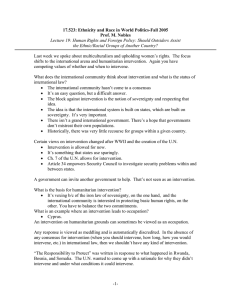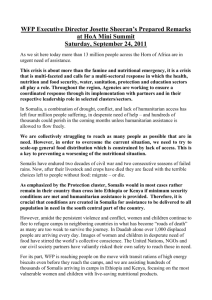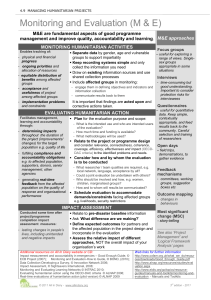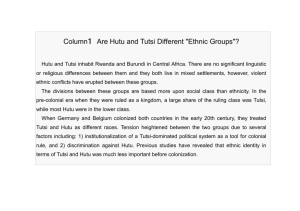Humanitarian Intervention and State Sovereignty
advertisement
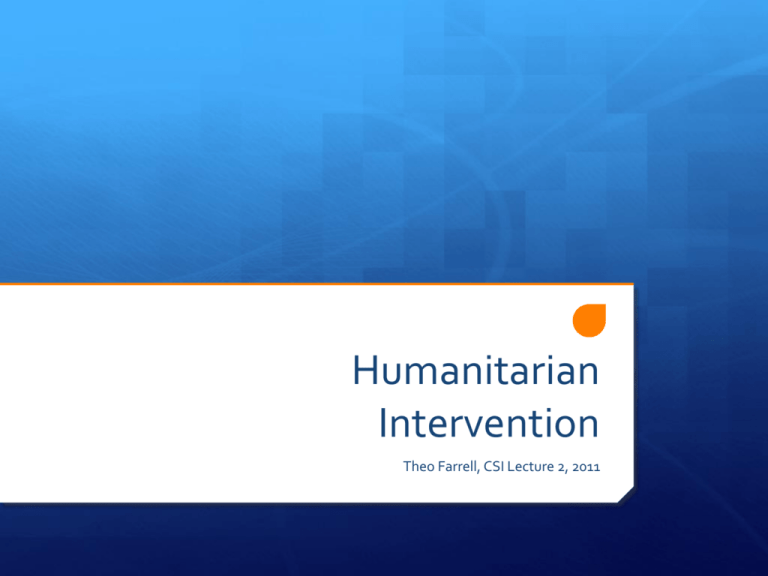
Humanitarian Intervention Theo Farrell, CSI Lecture 2, 2011 Humanitarian intervention Definition: ‘forcible military intervention in humanitarian crises’ in failed states to secure aid against murderous states to stop atrocities The new interventionism 1988-1993: 20 new missions UN peacekeeping budget * $230 m in 1988 * $800 m – $1.6 b in 1990s Rare during Cold War 1. Superpower stand-off 2. Insufficient public pressure 3. UNSC log-jam Traditional peacekeeping • Chapter VI and a half’ activity - Required ceasefire and consent • Limited in number, size and scope - 1948-1978: 13 missions - 1978-1988: none - supervise truces The blue helmets UN Charter Article 2(3): Settle disputes by ‘peaceful means’ Article 2(4): refrain from ‘threat or use of force’ Article 2(7): non-intervention Article 51: inherent ‘right of self-defence.’ Chapter VII: peace enforcement – in response to a ‘threat to international peace and security.’ Humanitarian? Not in name India in East Pakistan (1971) Tanzania in Uganda (1978) Vietnam in Cambodia (1978) France in Central African Republic (1979) Cold war attitude “The notion that because a regime is detestable foreign intervention is justified and forcible overthrow is legitimate is extremely dangerous. That could ultimately jeopardise the very maintenance of international law and order.” French rep to UNSC, on Vietnamese intervention in Cambodia, 1978 Many interventions UN: Somalia (1992-95), Bosnia (1992-95), Cambodia (1992-93), East Timor (1999) Coalition: northern Iraq (1991) ECOWAS: Liberia (1990), Sierra Leone (1997) CIS: Tajikistan (1993), Georgia (1992) NATO: Kosovo (1999) Serb thugs in action UN impotence Failure at Srebrenica Somalia: mission over (1993) Lessons from intervention failures SOMALIA (1992-1994) dangers of crossing the consent divide BOSNIA (1992-1995) dangers from peace spoilers need to induce consent Shadow of Somalia Agenda for Peace (1992) v. Supplement to an Agenda for Peace (1995) PDD-25 The Clinton Administration’s Policy on Reforming Multilateral Peace Operations (1994) Rwandan genocide 800,000 massacred in 100 days (April-July 1994) Hutu extremists v. Tutsi and Hutu moderates Causes of civil war Mary Kaldor – ‘new wars’: identity, non-state actors, and low-tech. Paul Collier – greed v. grievance: economic motives Stuart Kaufman – elite manipulation v. mass moments: myths about ‘ancient hatreds’ Road to genocide Elite manipulation of tribal identity Collapse in commodity prices French military support to Hutu extremists Tutsi RPF assault on Kigali in 1993 leads to inclusion of Tutsis in govt The trigger: shooting down President’s plane (6 April 1994) Rwanda, 1994 UN disgrace UN Response UNAMIR reduced from 2,500 to 270 (21 April) UNSCR 918 expands force to 5,500 (17 May) 2,300 strong French force create “Humanitarian Protection Zone” (9 July) Could intervention have worked? the French success? pace of slaughter? UNAMIR warned of genocide Politics of HI: public opinion 1. ‘CNN effect’: dependent on degree of policy certainty and political unity 2. ‘Bodybags effect’: misunderstood by policymakers Politics of HI: UNSC politics log-rolling problem veto problem posturing problem co-ordination problem Peace ops: principles and practicalities Objective – often ambiguous and unattainable Unity of effort – divergent troop contributors Mass – dispersal of forces Surprise – little speed and secrecy in peace operations Peace ops: public opinion and operational pathologies Strategic compression of battlefield Full-force protection Over-reliance on air power Focus on exit strategies Doctrine of International Community Are we sure of our case? Have we exhausted diplomatic options? Does the military instrument offer prudent and achievable goals? Are we prepared to be in this for the long term? Is our national interest truly engage? Tony Blair, Chicago, 22 April 1999 The future of humanitarian intervention? Evolving norm – state practice over time – each intervention ‘unique’? International Criminal Court: agent for action R2P, Kosovo and Iraq – rising powers push back Western appetite post Iraq and Afghanistan?
